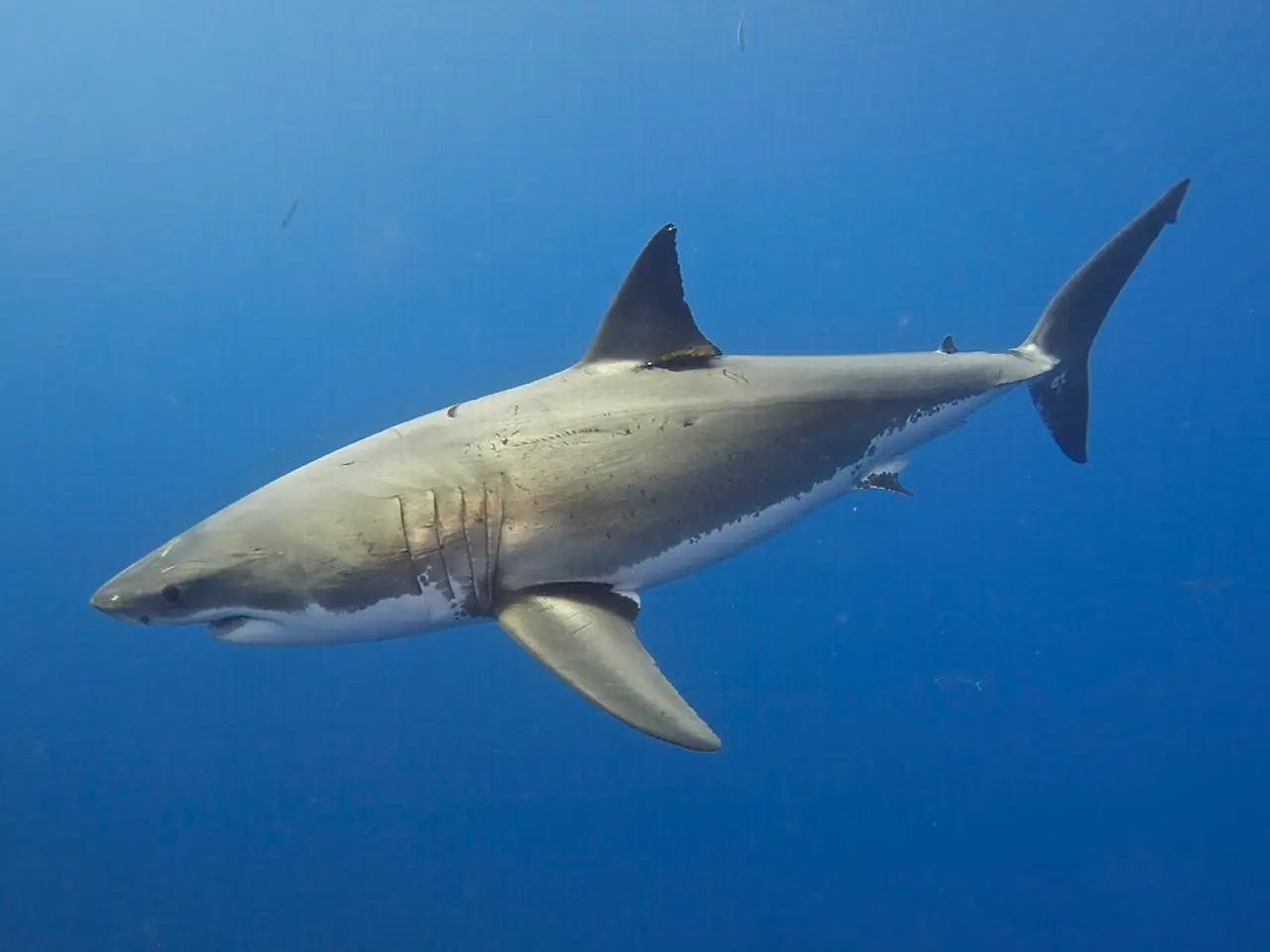The Reason Behind Cat's Eyes Glowing is Similar to That of Great White Sharks - A Misunderstood Phenomenon
### Unveiling the Secrets of Night Vision in Great White Sharks and Cats
In the realm of nature's most captivating creatures, the night vision of great white sharks and domestic cats stands out as a remarkable adaptation. At the heart of this extraordinary ability lies a unique layer known as the **tapetum lucidum**. This reflective layer, found behind the retina, acts like a mirror, bouncing light back onto the photoreceptor cells for a second chance to absorb faint light[1].
### A Tale of Two Predators
- **Great White Sharks**: These apex predators have honed their night vision to perfection, using it to their advantage during dawn and dusk when light levels are low. Their incredible night vision enables them to launch surprise attacks on unsuspecting prey, cementing their status as formidable hunters[1]. - **Cats**: Much like their aquatic counterparts, cats rely on their enhanced night vision to navigate and hunt in the dark. The tapetum lucidum is responsible for the "glowing eyes" effect often observed in cats.
### Human Night Vision: A Comparative Study
- **Human Night Vision**: Unlike great white sharks and cats, humans lack the tapetum lucidum. Our night vision is primarily dependent on the rods and cones in the retina. While rods are more sensitive to low light, the absence of the tapetum lucidum means that we are limited in our ability to see in extremely low light conditions. - **The Edge**: Great white sharks are thought to have **10 times better** night vision than humans, demonstrating the significant advantage provided by the tapetum lucidum[1].
### Beyond Biology: Technological Advancements
Beyond the realm of biology, technological advancements aim to improve night vision. For instance, infrared thermal cameras can detect thermal signatures, allowing for the tracking of objects in the dark without the need for visible light[3]. Additionally, innovations in nanotechnology have led to the development of devices that can trap and convert infrared light, potentially enhancing night vision through special coatings or glasses[4].
However, these technologies do not replicate the biological efficiency of the tapetum lucidum but offer alternative methods to enhance low-light visibility.
As we delve deeper into the mysteries of nature, the tapetum lucidum serves as a testament to evolution's ability to adapt and thrive in challenging conditions. This fascinating layer continues to captivate scientists and enthusiasts alike, offering a glimpse into the extraordinary world of night vision in great white sharks and cats.
References: [1] National Geographic Society. (2022). Great White Shark. Retrieved from https://www.nationalgeographic.org/animals/fish/g/great-white-shark/ [2] National Geographic Society. (2022). Tapetum lucidum. Retrieved from https://www.nationalgeographic.org/encyclopedia/tapetum-lucidum/ [3] National Geographic Society. (2022). Infrared Thermal Camera. Retrieved from https://www.nationalgeographic.org/encyclopedia/infrared-thermal-camera/ [4] National Geographic Society. (2022). Nanotechnology. Retrieved from https://www.nationalgeographic.org/encyclopedia/nanotechnology/
- The field of environmental science revels in the intricacies of the tapetum lucidum, a layer found in great white sharks and cats, which enhances their night vision.
- In the sphere of health and wellness, humans lack the tapetum lucidum, and thus, our night vision is generally less effective than that of these predators.
- In the world of fitness and exercise, understanding the tapetum lucidum can inspire technological advancements, improving low-light visibility beyond human capabilities.
- The realm of climate change, mental health, and weather are not directly connected to the tapetum lucidum, but the insights gained from studying this feature can broaden our understanding of evolution and adaptation in various environments.
- In the lifestyle section, books delve into the mysteries of the tapetum lucidum, offering intriguing information for enthusiasts.
- The entertainment industry has depicted the night vision abilities of great white sharks and cats in numerous films and documentaries, educational and exoticizing the phenomenon simultaneously.
- In the realm of space and astronomy, the study of the tapetum lucidum can offer insights into the evolution of night vision on Earth, which may have implications for our understanding of life on other planets or moons.
- In the food and drink sector, the understanding of the tapetum lucidum does not have a direct impact, but it contributes to our comprehension of the interconnectedness of science, nature, and technology, which impacts our everyday lives.






